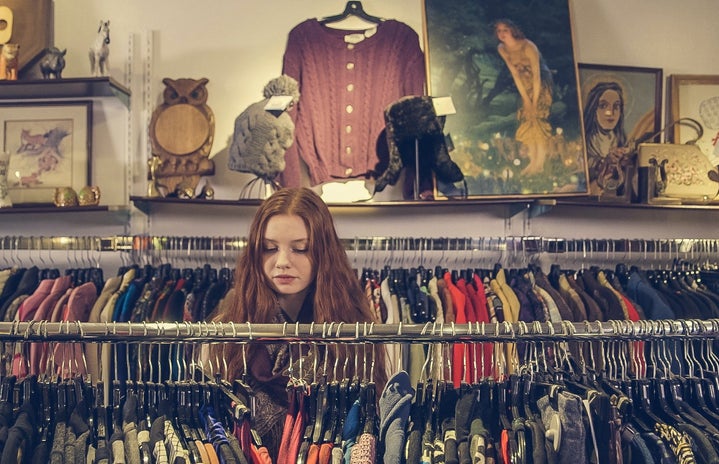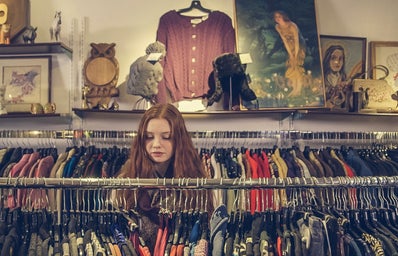The luxury fashion industry’s embrace of Western cultural hegemony is no secret. They have profited off of socioeconomic hierarchical structures for years and there is no end in sight. The industry continues to be dominated by affluent white men, but it is slowly evolving. The fashion industry now tends to be influenced by and plays off of current events; recently, the juxtaposition of anti-racism movements and a historically racist system instilled in Western culture has become a prominent societal issue. So, how does a person who has never experienced oppression in their life respond appropriately to the trauma they will never know?
They can’t, and they don’t. They simply attempt to put a bandage on a stab wound.
Under the management of white executives and without the consultation of a diverse range of creatives, explicitly offensive images are now masked by performance activism and “diverse” model casts. Despite what some brands may think, casting a few models of colour in a runway show does not undo hundreds of years of systematic racism. In fact, some brands attempt to use models of colour as a shield to excuse racist behaviour.
Marni’s “Jungle Mood”
The Italian brand Marni’s recent campaign is an unfortunate and poignant example of the above problem. Their “Jungle Mood” editorial featured problematic imagery laced with an equally problematic statement. The photographs depict Black models dressed in “non-Western” items including woven grass hats, bulky Bayong necklaces, and bangles. None of these items are even available for purchase in the collection, which makes the viewer question why they were included in the campaign. The answer is simple: cultural tokenism. Tokenism can be explained as the practice through which institutions attempt to be inclusive to minority groups through performative and symbolic efforts. Marni attempted to appear “inclusive” in a time where brands have been facing scrutiny over their contributions to western cultural hegemony but fell far from their alleged goals.
Furthermore, some of the models were captured with chains around their ankles resembling shackles. It doesn’t take much to understand why this imagery is disrespectful and tone-deaf. To make matters worse, the images were superimposed with phrases “Barefoot in the jungle”, “Jungle mood” and “Tribal amulet”. At first glance, these phrases correlate with the aesthetic direction of the shoot. However, given the context of images and the items that were included in the shots, these phrases come off as overtly racist and feed into anachronistic stereotypes and colonial ideals.
The campaign faced an immediate backlash following its Instagram debut; Marni’s comments were filled with criticism. The brand eventually deleted all images related to the collection and issued an apology. But, the damage was already done.
Comme des Garcons Menswear FW20
Marni’s out-of-touch campaign isn’t the only recent example of offensive behaviour in the fashion industry. At Comme des Garcons Fall/Winter 2020 Menswear show, models strutted down the runway in cornrowed wigs despite the majority of the cast being Caucasian-passing. Though this “creative choice” is not a direct act of racism or prejudice, it is certainly an irritating act of cultural appropriation.
Cultural appropriation is described as the adoption of an aspect of a culture or identity (usually a marginalized community) by another culture (usually the dominant). The most frequent example of this is when non-Black people “adopt” a particular aspect of Black culture without fully understanding the significance of what they are appropriating. CDG’s wig controversy is a perfect example of this. Stylists used the hairstyle for purely aesthetic purposes without researching the cultural significance behind the hairstyle.
This move was particularly problematic, as Black people are often harassed and ostracized for wearing protective styles, yet non-Black people are allowed to profit off of them? Just days after the Comme des Garcon show, a high school senior, Deandre Arnold, was suspended from school and told that he was not allowed to participate in his graduation ceremony if he did not cut his dreadlocks. Unfortunately, Arnold is not a unique case; these acts of discrimination against Black and Brown communities occur every day. Similarly, last year, two young girls were banned from participating in a Nutcracker performance because they wore their hair in braids. These injustices highlight the scrutiny that the Black community regularly faces, simply for participating in their own culture. It is not fair that other cultures feel entitled to purloin Black culture, while Black people are punished for engaging with it.
The hairstylist who decided on the inclusion of the wigs offered an apology and explanation, citing an Egyptian prince as “inspiration”, however, this further illustrates a lack of research and consideration.
These two incidents are not the only examples of derogatory behaviour in the industry. Gucci’s blackface turtleneck controversy, H&M’s monkey sweatshirt ad image and Prada’s Little Black Sambo bag charm are just a few other examples of the racial insensitivity that laces the world of fashion. Though, the fashion industry doesn’t just have an anti-black history; there have been multiple instances of cultural appropriation and offensive “creative” decisions that have hurt marginalized communities. A 2018 advertisement released by the notoriously controversial brand Dolce & Gabbana came under fire for its anti-Asian tone that illustrated diminishing stereotypes about Chinese culture.
So what can brands do to address and solve racist tendencies? Following the death of unarmed Black man George Floyd at the hands of police, many brands faced pressure to address the issue of racism and anti-blackness in the industry and took to social media to condemn racism and propose diversity pledges. Unfortunately, diversity pledges are not the solution. The industry cannot simply mask the issue by promising to cast more models of colour. Instead, as a whole, it must tackle systemic racism and prejudice from its root. A diverse performative image means nothing if it is not a true reflection of the brands themselves. The industry needs to contemplate the experiences and identities of the individuals in power and how they influence decision making, hiring practices and company culture. It is so important to hire diverse creatives and engage them in creative processes so brands educate themselves and can avoid these controversies. Companies cannot continue to profit off of marginalized communities without recognizing and giving credit to those artists that they profit from.
As consumers, we should do our best to shop sustainably and support brands owned and operated by people of colour. As viewers of media, we must continue to challenge fashion advertising and media to do better by continuing to call out brands on their use of cultural appropriation and racist behaviour. We must do our part to change the narrative and support POC creatives and fashion influencers and amplify their voices rather than passively accepting the current narrative.
Related Articles
- Your Guide to Thrift Shopping in London
- Apricotton: The Company That’s Changing the Tween Bra Game
- Let Glossier Be Your Only Exception to Trusting Hyped up Fads
Want more HCW? Check us out on social media!
Facebook, Twitter, Instagram, Pinterest
Subscribe to our newsletter!



